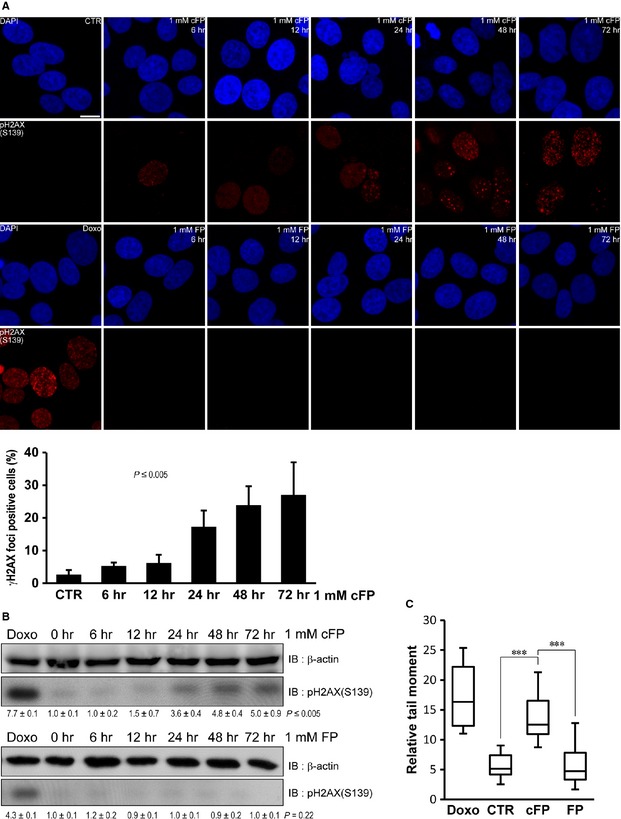Figure 1.

Induction of DNA damage in cFP‐treated INT‐407 cells. (A) Representative images demonstrate the increased γH2AX foci formation in cFP‐treated INT‐407 cells. In contrast, 1 mM linear FP dipeptides (FP) treatment or no treatment (CTR) does not induce γH2AX foci formation. After INT‐407 cells were incubated with 1 mM cFP for indicated times, cells were immunostained with an anti‐phospho H2AX (S139) antibody. Nuclei were identified using DAPI staining. As a positive control, INT‐407 cells were treated with 1 μM doxorubicin (Doxo); scale bar, 10 μm. (B) Phosphorylation of H2AX (S139) is increased in cFP‐treated INT‐407 cells. However, treatment of 1 mM linear FP dipeptides (FP) does not induce H2AX (S139) phosphorylation. As positive control, INT‐407 cells were treated with 1 μM doxorubicin (Doxo). The lysates were immunoblotted with anti‐phospho H2AX (S139) antibody. The anti‐β actin antibody was used as a loading control. Western blots were analysed quantitatively. Relative band intensities are expressed as the mean ± S.D. (C) Increased DNA damage in cFP‐treated INT‐407 cells. After cells were incubated with 1 mM cFP or linear FP dipeptides (FP) for 48 hrs, cells were embedded, lysed and electrophoresed in agarose. DNA damage was analysed using the Comet Score program. As controls, INT‐407 cells were untreated (CTR) or treated with 1 μM doxorubicin (Doxo). ***P ≤ 0.005.
